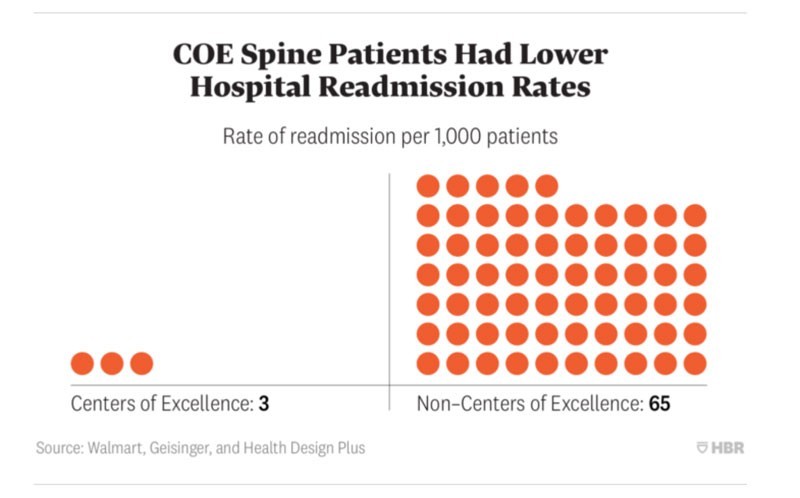These Companies Are Reinventing Their Health Benefits — and Creating a Major Competitive Advantage
In 1942, at the height of the Second World War, U.S. employers faced a serious crisis. With so many workers engaged in military service, competition for talent was through the roof — but an executive order had frozen wages to curb inflation.
Companies had to rethink their strategy for attracting great candidates. And because of that, generous health benefits became a major competitive advantage in hiring.
That hasn’t changed much in 77 years. In a 2018 survey, LinkedIn found that 49% of employees would value increased health and wellness benefits over any other perks. Another study found that these benefits are a key driver for 75% of career decisions. And 60% of employers report that offering company-sponsored health insurance has even led to higher productivity levels among employees, so there’s a real business case for such programs.
But with such a high percentage of employers offering some form of health benefits these days, companies need to go the extra mile to really make candidates take notice. Here are five companies that are taking an innovative approach to stand out from the crowd — and improve the lives of their employees.
1. Activision Blizzard provides coverage for part-time staff and their dependents
In 2017, only one in three companies (34%) offered any health coverage to part-time employees. That’s up from 2014 when the number was just 27%, but still a steep drop-off from the 99% offering it to full-time workers.
One company going against the grain when it comes to part-time health benefits is Activision Blizzard. The video game publisher offers 100% health coverage to all employees who work at least 30 hours a week, including prescription drugs, vision, and dental. What’s more, dependents of part-time employees are also eligible for 80% coverage on their premiums.
Activision Blizzard’s website explains that it aims to be “innovative, inclusive, and constantly improving” when it comes to its benefits programs. This approach has helped the company snag a spot on Fortune’s list of the 100 Best Companies to Work For a total of five times.
Since health benefits for part-time, gig, and freelance workers are still relatively rare, offering them can be a big differentiator for your company. Even if you can’t offer 100% coverage, highlighting which benefits are available for all employees can help set your company apart.
2. Walmart works directly with health systems to ensure employees receive the highest standard of care
They say that if you want something done right, do it yourself. That’s the approach Walmart is pioneering with its Centers of Excellence (COE) program. Rather than relying on insurance companies, the retail giant works directly with leading health systems to ensure its employees (which it calls “Associates”) receive the highest quality of care.
Now in its sixth year, the COE program is tailored specifically to give employees with serious medical conditions easy access to the right procedures and the best care. This includes certain heart, spine, and weight loss surgeries, organ transplants, joint replacements, and many cancer treatments.
In many cases, treatment is 100% covered from start to finish, including initial tests and evaluations. The company will also typically pay for necessary travel, lodging, and expenses cost, both for the employee and their caregiver.
One major success story of Walmart’s program that was reported in Harvard Business Review (HBR) involved an employee who had been living with chronic neck pain for years. When the pain worsened and the employee began displaying a slight tremor in his hands, a local surgeon diagnosed him with a spinal problem and explained his best option was spine surgery.
Rather than getting the surgery at his community hospital, the employee used Walmart’s plan to fly to another state with his wife, where he received a consultation at a top spine center. This consultation uncovered the true cause of his symptoms: Parkinson’s disease.
With a correct diagnosis in hand, the employee was able to receive the right treatment faster and avoid a potentially dangerous (and pointless) surgery. All in all, Walmart saved around $30,000, and the employee is already back at work and doing better.
Considering that only 6% of companies worked directly with providers in 2017, this move has given Walmart a serious edge. The benefit to employees has been huge. Take spine surgeries. According to HBR, patients receiving treatment through the CEO program have spent 14% less time in hospital and returned to work 20% sooner than those who went outside the program — and their likelihood of readmission was 95% lower.
Walmart has also seen significant savings. Cost per case on joint replacements alone is 15% lower through the CEO program than it is through other providers.
Partnering with health providers is a big step, but one that many companies may want to consider. If you can’t offer this option right now, showing that your company takes a personalized approach to health and wellness can also go along way — even if it’s something as simple as a service to help employees find the right coverage option for them.
3. Amazon, JP Morgan Chase, and Berkshire Hathaway are creating their own healthcare company to improve care for their combined workforces
When you’re a company as large as Amazon, JP Morgan Chase, or Berkshire Hathaway, you can really afford to splurge on amazing perks to attract top candidates. But these three giants decided to go one step further than that — teaming up to establish their own healthcare company to provide a better quality of care for their combined workforces.
The healthcare nonprofit is called Haven, and as of March, hiring and development are well underway.
“Our people want transparency, knowledge and control when it comes to managing their healthcare,” Jamie Dimon, Chairman and CEO of JPMorgan Chase, explained in the initial press release about the partnership. “The three of our companies have extraordinary resources, and our goal is to create solutions that benefit our U.S. employees, their families and, potentially, all Americans.”
Details about Haven are still emerging, so it’s difficult to say right now exactly what this project will look like or how it will impact the lives of employees. But the initiative sends a powerful message to candidates that these employers want to go above and beyond to provide better benefits — and that’s something all companies can learn from.
Health benefits matter to employees, so don’t be afraid to flaunt them
Of all the perks and benefits your company offers, the impact of health initiatives may be the most reciprocal. Not only will employees appreciate you for supporting their own wellbeing and that of their family, but the company may see a boost in productivity and a reduction in absenteeism. That’s not to mention what an important asset these benefits are in your recruitment and retention strategy.
To set your company apart from your competitors, focus on what you’re doing differently, whether that’s a uniquely effective program or an interesting tie-in with your culture and core values. Even if you’re a small fish in a big pond, simple offerings like access to a meditation app can stand out in candidates’ minds — and have a profound impact on the health and wellness of your employees.
*Image from JPMorgan Chase & Co.
To receive blog posts like this one straight in your inbox, subscribe to the blog newsletter.
Topics: HR Employer brand
Related articles




